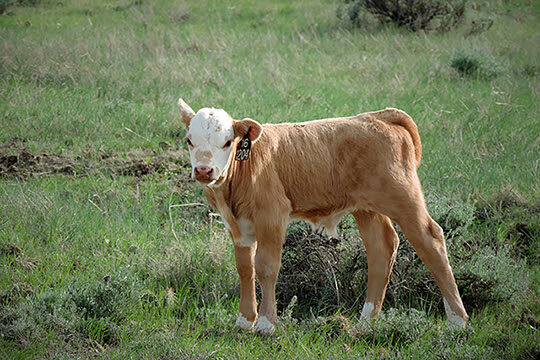On rangelands of the Western U.S., calving in late winter instead of spring maximizes calf growth (weight) by supplying high-quality forage when its most needed, according to a study by the United States Department of Agriculture’s Agricultural Research Service.
There is high value in utilizing rangelands to lower the cost of beef production. Selecting the right calving time, when calves are born, is one factor ranchers can adjust to affect the efficiency of beef production.
However, with climate conditions shifting, the costs and benefits of calving at different times are changing.
Scientists at the ARS Livestock and Range Research Laboratory in Miles City, Montana, completed a long-term study recently published in Rangeland Ecology & Management. The researchers analyzed more than eighty years of data from over 39,000 calves to obtain an accurate reading of the effect of calving date on calf weight gain.
"The long-term data allowed us to estimate the relationship between calving date and calf weight averaged over many years. The average relationship helps producers determine the best calving date over the long term. This must be considered because the calving date of a herd is difficult to adjust once set," explained Research Rangeland Management Specialist and lead author Matthew Rinella.
The research team observed that calves born early March [late winter] averaged about 13% heavier at 180 days of age than those born early May [spring]. This is because calves born in
March are older and larger and can therefore better utilize the high-quality forage that is available in summer, whereas May calves reach 180 days of age in early November, long after forage quality has typically declined.
"When calves are born earlier, they typically experience a better match between their nutrient requirements and the timing of protein and energy supplied by forage," Rinella said.
Eighty-two years of data allowed the scientists to look at cold mortality rate of beef calves born during late winter. To avoid this risk, some ranchers prefer waiting until spring to calve. However, even after considering the risk, the researchers found early calving increases overall beef production.
In addition, since the 1940s, the risk of cold weather mortality has declined due to warming winter temperatures, and there is a good chance this trend will continue according to climate models. Moreover, the beginning of plant growth appears to be shifting earlier in the Western U.S. All provides further incentives to calve early.
Other considerations factored in determining when the right timing is for calving, including calf markets, feed costs, and the timing of ranching operations.
"This study puts numbers to calf weight and beef production resulting from different calving dates so that ranchers can factor these things into their decision-making," said Rinella.
The Agricultural Research Service is the U.S. Department of Agriculture’s chief scientific in-house research agency. Daily, ARS focuses on solutions to agricultural problems affecting America. Each dollar invested in agricultural research results in $17 of economic impact.




